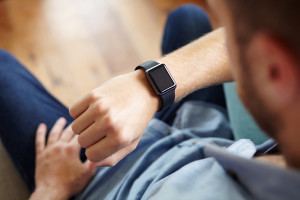 Go anywhere these days and you’ll see people checking their phones and accessing social media. That’s why as an optometry business owner, you most likely have a office policy detailing proper use of smart phones during work hours.
Go anywhere these days and you’ll see people checking their phones and accessing social media. That’s why as an optometry business owner, you most likely have a office policy detailing proper use of smart phones during work hours.
But what about wearable technology? With the advent of the Apple Watch and others, your staff members have the capability to stay posted to their most recent notifications throughout the day and others may not even realize they are doing it. Before you have to reprimand a staff member for monitoring social media while working up a patient, it’s a good idea to become familiar with the popular wearable technology options and have a policy in place. It’s always easier to address the issue before it becomes an issue.
Three common wearable technologies that communicate to the user from his or her smartphone.
- Apple or Samsung Watch – These watches are the easiest to spot because they are rather large. This technology allows the user to view incoming text messages and notifications while also allowing for short responses. From an owner’s viewpoint, if you don’t allow your staff members to use their cell phones during patient care, then you will most likely need to ask them to not wear their smart watches during patient care. Adding this to your policy now will keep it from being a major issue later.
- Pebble Watch – This is similar to the above mentioned watches with fewer features. The Pebble does allow for communication but is more discreet than the above two watches. One of your staff members may be wearing one now and you might be completely unaware of the technology. I would recommend that you list this one along with the Apple or Samsung watches in your policy. I’ve used a Pebble dress watch for the past couple of years to screen calls and watch for important messages throughout the day while seeing patients. When I see a doctor-to-doctor call, I can politely excuse myself from the room and take the call.
- Garmin Vivosmart – This looks like a Fit Bit (another wearable technology) that monitors steps and physical activity throughout the day. The reason that I own one of these instead of a simple activity monitor is that I am able to get all notifications through this little guy. I love it because it is the ultimate in being discreet. Because these have notification capabilities it would be wise to ask staff to also refrain from wearing these during work so they will not be distracted by all of the text messages, Starbucks notifications, calendar updates, etc. that are sent to this wrist device.
When did the job of an optometrist become a policy maker and enforcer? The moment you became the owner. Unfortunately, these are the issues that we all deal with in small optometry business. The wise owner takes action prior to the issue becoming a problem, rather than letting the damage accumulate as issues remain unaddressed. Decide now what your policy will be on wearable technology and add it to your employment/policy manual.





